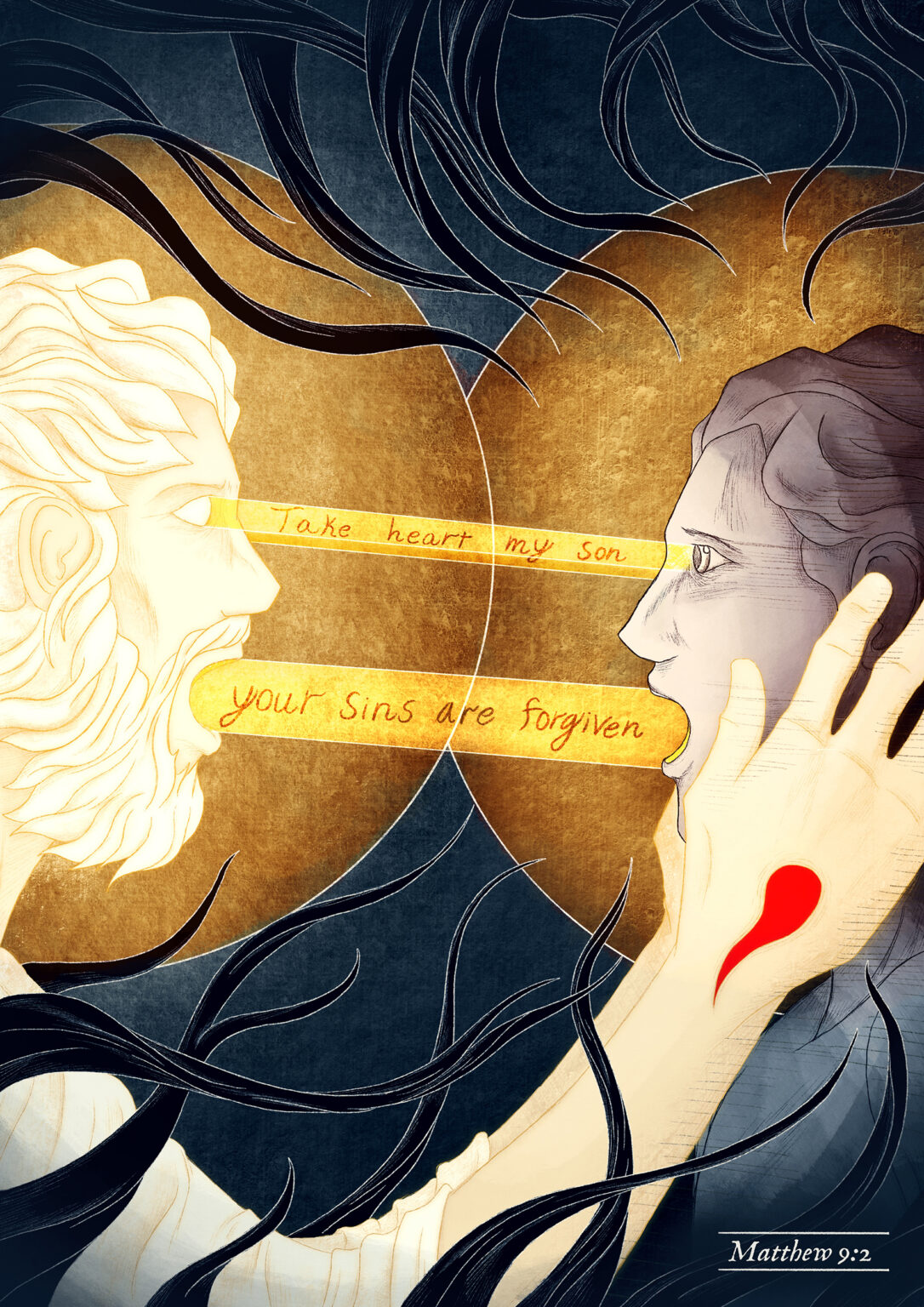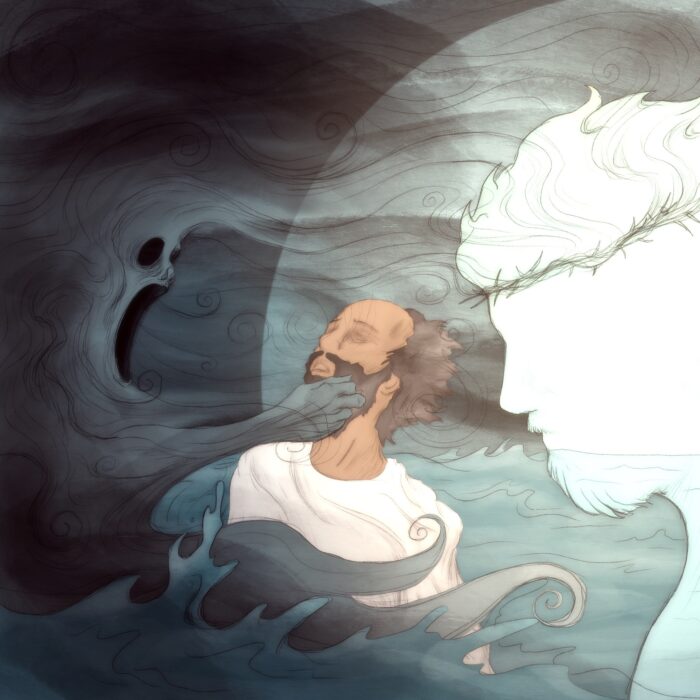
Matthew 9:2, “Take heart, my son; your sins are forgiven.”
First, notice that the Lord affirms that this man is not to be defined as a paralytic, or a depressed individual, or a beggar, or an inconvenience, or a problem to be solved, rather, he is a SON….and if a son, then he 1) BELONGS to someone, and 2) specifically in this context, has a FATHER, who is God Himself. So Jesus “locates” this man within a relational context.
But then secondly, having affirmed that this man is to take heart because he is a SON, and therefore loved and cared for, Jesus speaks the word that is almost too fantastic to believe: “your sins are forgiven” (or, to be more literal, “your sins have been released”). This is a word that seems too good to be true…..how can it be? The ONLY THING standing between me and the soul-satisfying embrace of the Triune God is my SIN….and here Jesus says that sin—that sole barrier—is GONE….forgiven, released. “take heart my son”—why? “Your sins are FORGIVEN….the burden is gone…the barrier is removed…the weight is lifted—be of good cheer…”
And HOW is this wrought? Through the sin-bearing, wrath-absorbing, God-revealing death and resurrection of the Beloved Son. The words Jesus speaks into the paralytic‘s soul are not cheap words….they are purchased at the price of God’s own blood….Which also means the forgiveness that Jesus gives is SEALED and ASSURED by His own blood. What can be more sure that that? The promise that those who cling to Christ are forgiven their sins by virtue of their union to the Son who died for their sin and rose again—that promise is assured by the WORD and sealed with the BLOOD of our Lord Himself….SO—with that being said, why did I illustrate the passage in this way?
_________________
First, the words of Christ, “take heart, my Son, your sins are forgiven” are written in the center of the image. This is a departure from my typical style, but I added the actual text to the picture because I wanted to emphasize the clarity and simplicity of Jesus’ statement in this passage. Just as these words stand out against all the other elements in this picture, so to the refreshing clarity of Jesus’ statement to the paralytic “stood out” against all the other words and voices that were, no doubt, vying for the man’s attention.
Next, notice that Christ is pictured as holding the man’s head between His hands, with the words of Matthew 9:2 flowing from Jesus’ eyes into the man’s eyes and from Jesus’ mouth into the man’s mouth. A few things are depicted here:
1) The posture of Jesus, holding the man’s face steady and looking intently into his eyes, is a way of visualizing the heart-strengthening, fear-calming effect of Jesus’ words. The dark tendrils around the edge of the picture image the fears and doubts and cares that whisper and tear and beat against the soul, and the man is tempted to look at these rather than Christ. However, Christ hold’s the man’s face and turns his eyes toward Himself in a gesture of firm, yet gentle, authority.
2) The light flows from Christ’s eyes into the man’s eyes is a way of saying that the man ought to SEE himself and his reality as Jesus’ sees him, namely as one FORGIVEN.
3) And similarly, the light flows from Christ’s mouth into the man’s mouth to show that the man must SPEAK of himself (especially internally) as Christ has spoken of him, namely, that he is FORGIVEN.
See also that the hand with which Christ holds the man steady bears the wound of crucifixion. It is only because of Jesus’ death and resurrection that He can speak this word of forgiveness to our soul, And it is by that same death and resurrection that he proves Himself to be the one who is worthy and able to hold our wandering, fearful heart steady and to speak to it truth that will endure through this life and into the next.
And finally, notice that the man is not looking at himself, but straight into the eyes of the crucified Jesus who is risen and alive forevermore. This is true in all things, but especially when it comes to believing that we are forgiven / accepted / redeemed, etc…..When we look at ourselves for validation or assurance (i.e., “how am I doing?” “How is my faith?” “What about that?” “What about this?” Etc.), we will quickly spiral into uncertainty and fear…..Instead, we are to look to CHRIST, set our eyes on CHRIST, be enamored with the beauty of CHRIST….faith increases and assurance flourishes as we look not to the dark and echoing labyrinth of our own soul, but to the radiant clarity of God’s beauty as manifest in the slain and risen Jesus, who—as the one who holds all authority in heaven and on earth—speaks to any and all who come to Him (John 6:37), “take heart, my child, your sins are forgiven…”




